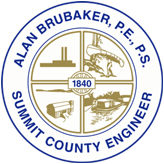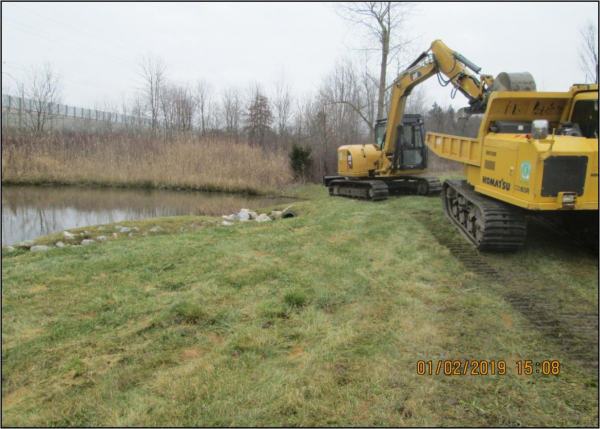Assessed Subdivisions
All property owners in subdivisions developed since the mid 1980s pay a Drainage Maintenance Assessment. Find out more here.
Drainage Maintenance Assessments
Township residents living within assessed subdivisions may have additional options for addressing surface water issues. Subdivision lots built in the 1980s and after are required to pay a Drainage Maintenance Assessment for the long term maintenance of the subdivision's stormwater facilities that are outside of the roadways. The County collects that money in a special account set aside for assessed subdivsion stormwater needs. Water problems arising from any of assessed stormwater facilities can be addressed using those funds. Our maintenance crews and consultants perform routine inspection and maintenance of the stormwater management facilities (SWMF) within those assessed subdivisions. In addition, our crews have completed major clearing, grading, and repair projects at SWMFs in many subdivisions. Currently, Davey Resource Group and Emerald Environmental have contracts for inspection and maintenance.
- Assessed Subdivision Brochure 2020 (PDF, 903.0k)
- West Fork Streambank Repair Updated Report (PDF, 1580.6k)
- Landowners' Guide to Stormwater (PDF, 654.0k)
Why Assessments?
Most subdivisions built after the 1970s included stormwater detention basins, to slow the flow of stormwater from these developments and help reduce the flooding and stream erosion caused by the rapid flow. These detention basins were often located on private lots, but covered by easements to the County, to provide the County with the right to make repairs if the owner failed to do so. However, some easements were generic, with no rights to the County. After the 1990’s, amendments to the Clean Water Act added new regulations aimed at improving the quality of the storm water that was slowly released, making the basins’ designs more complex, and maintenance requirements more time-consuming. Also, the basins were located more often on common areas owned by the Homeowner Owner Associations (HOAs). The responsibility, financial and otherwise, for the maintenance and repair of the basins, along with any drainpipes and ditches, and/or watercourses, ultimately rests on the property owner, whether a private resident or a homeowners association, unless another provision is made. Summit County is able to help the owners meet these requirements, with all owners in the allotment sharing the cost. Most developers enter into contracts with the county that allows the county to take care of these obligations for them for a fee. The terms are spelled out in the plats and maintenance agreements for each of the subdivisions.
History and Relevant Laws
- The Federal Water Pollution Control Act of 1948 was the first major U.S. law to address water pollution. Growing public awareness and concern for controlling water pollution led to sweeping amendments in 1972, when the law became known as the Clean Water Act (CWA).
- The CWA was itself amended in 1977 to regulate the discharge of polluted water into rivers, lakes, and coastal waters. This pollution could be untreated wastewater or surface water runoff from municipalities, industries, businesses and construction sites.
- Subsequent amendments to the CWA have added requirements postconstruction surface water quality controls at developed sites with impervious areas such as paved streets, parking lots, and building rooftops.
- In addition to the EPA rules, Summit County Subdivision Regulations include storm water quality best management practices to which the land developers must conform. These rules also pass some obligation on to the eventual homeowners: "To ensure proper maintenance of the Stormwater Management System constructed by the Developer, a Maintenance Agreement requires a Maintenance Fee obligation pass with the Title to the Property. The Maintenance Fee to be assessed is puruant to the Ohio Revised Code Section 6131.63 and 6137 and is determined by the Summit County Engineer.
Rates
- Subdivision drainage maintenance assessment revenue can not be used for other projects such as roadside ditches or petitioned county ditches.
- With the recording of each subdivision plat, the original property owner (developer) agrees to allow assessments to be collected for the maintenance of the storm water management facilities (SWMFs) which are outside the road rights-of-way. This provision is typically included on the plat and maintenance agreement.
- Rates are determined based on the total costs of drainage improvements in each subdivision.
- The Ohio Revised Code states that the annual cost of maintenance of storm water facilities is assumed to be 20% of the original construction costs of the drainage system.
- The maintenance cost is spread among the individual sublots, according to each parcel’s acreage and street frontage.
- The resulting amount is collected as an assessment on the property tax bill, to be collected permanently.
- Every 6 years, the assessments are reviewed and adjusted as necessary to account for the actual cost of maintenance of the SWMFs.

